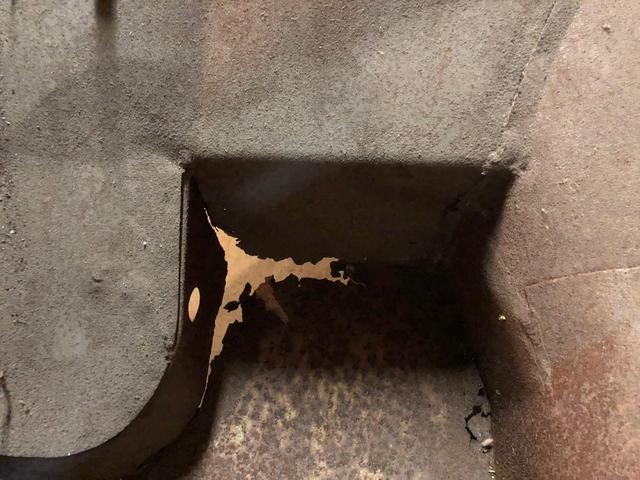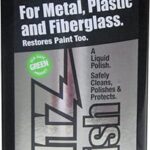When tackling auto body repairs, one of the first questions that arises is choosing the correct gauge and type of sheet metal. Just like using the right tools for the job, selecting the appropriate sheet metal thickness is crucial for ensuring the durability, appearance, and structural integrity of your repair. This article will delve into what gauge sheet metal is typically used for auto body repair, helping you make informed decisions for your next project.
Understanding Sheet Metal Gauge for Auto Body Work
The term “gauge” refers to the thickness of sheet metal. It’s important to understand that the gauge system is inversely related to thickness: the lower the gauge number, the thicker the metal. For instance, 18 gauge sheet metal is thicker than 20 gauge.
In the context of auto body repair, particularly for classic cars, the original body panels were often made from steel around 19 gauge. However, finding 19 gauge steel readily available today can be challenging. As a result, 18 gauge and 20 gauge are the most commonly used thicknesses for auto body patch panels and panel replacements.
Why 18 Gauge?
Many experienced auto body repair professionals recommend 18 gauge sheet metal for several reasons:
- Improved Panel Warp Control: Being slightly thicker than 20 gauge, 18 gauge steel offers better resistance to warping, especially when welding. This is crucial for maintaining the smooth lines of a vehicle’s body.
- Enhanced Durability: The added thickness provides slightly more strength and durability to the repaired area, which can be important for structural components or areas prone to stress.
- Closer to Original Thickness: For those restoring older vehicles, 18 gauge is closer to the original 19 gauge thickness used in many classic cars, ensuring a more authentic repair.
Why 20 Gauge?
While 18 gauge is often preferred, 20 gauge sheet metal also has its place in auto body repair:
- Easier Workability: 20 gauge steel is thinner and therefore easier to cut, shape, and form, especially for beginners or when using hand tools.
- Cost-Effective: Generally, 20 gauge sheet metal is slightly less expensive than 18 gauge, which can be a factor for larger projects.
- Suitable for Many Repairs: For non-structural patch panels and areas where extreme durability isn’t paramount, 20 gauge can be perfectly adequate.
Types of Sheet Metal for Auto Body Repair
Beyond gauge, the type of steel is also important. The discussion in the original forum post touches upon different types:
- Cold Rolled Steel (CRS): Cold rolled steel has a smoother surface finish and is produced through a process that hardens the steel. This makes it slightly stronger and less prone to warping during fabrication and welding. C1008/1010 CRS is a common type of mild steel suitable for auto body work.
- Hot Rolled Steel (HR): Hot rolled steel is more workable and easier to shape compared to cold rolled steel. It is produced at higher temperatures, which results in a softer steel. If needed, cold rolled steel can be annealed (heated and cooled slowly) to make it softer and more workable, similar to hot rolled steel, but this adds extra steps. C1008/1010 HR Steel Sheet is another mild steel option.
- Aluminized Steel: As mentioned in the original post, Eastwood sells “Aluminized Steel” patch panels. This type of steel is coated with aluminum, providing excellent corrosion resistance. It’s a good choice for areas prone to rust, such as floor pans and lower body panels.
- Mild Steel: The forum mentions “mild steel,” which refers to low carbon steel. C1008/1010 steel (both hot and cold rolled) falls into this category. The “1008” and “1010” designations indicate the carbon content, with the last two digits representing the carbon percentage (0.08% and 0.10% respectively). Lower carbon content means the steel is more workable and weldable, ideal for auto body repairs.
Tools for Working with Sheet Metal
The original forum also touches on tools for cutting and shaping sheet metal, which is relevant when considering different gauges:
- Tin Snips (Hand Shears): Suitable for thinner gauges like 20 gauge, especially for smaller cuts. However, 18 gauge can be challenging for hand snips, particularly for longer cuts.
- Angle Grinder with Cut-Off Wheel (“Death Wheel”): A popular and effective tool for cutting both 18 and 20 gauge steel. A thin 1/16″ cut-off wheel provides clean and relatively fast cuts.
- Beverly Shear: A heavy-duty hand-operated shear designed for precise and clean cuts in thicker gauges like 18 gauge, minimizing distortion.
- Electric Shears: Electric shears offer more power and ease of use compared to hand snips, making cutting 18 gauge steel less strenuous.
- Pneumatic Nibbler: A nibbler cuts by taking small bites out of the metal. It’s excellent for curved cuts and intricate shapes without distorting the edges. Pneumatic nibblers are effective on gauges up to 16 gauge and are easier to maneuver than shears for complex shapes.
- Shrinker/Stretcher: These tools are used to shape and contour sheet metal. As mentioned in the forum, Eastwood shrinker/stretchers are capable of working with 18 gauge mild steel, making them suitable for forming patch panels.
- Versa-bend Brake: For bending straight edges in sheet metal to create flanges or corners. Similar to shrinker/stretchers, brakes are typically rated for specific gauges, and models like the Eastwood “Versabend” can handle up to 18 gauge for certain widths.
 tr3_floor_panel.jpg
tr3_floor_panel.jpg
Choosing the Right Gauge for Your Auto Body Repair
So, what gauge sheet metal should you use for auto body repair? Here’s a summary to guide your decision:
- For most patch panels and general auto body repairs, 18 gauge mild steel (C1008/1010 CRS or HR) is an excellent choice. It provides a good balance of workability, durability, and warp resistance.
- 20 gauge mild steel is suitable for smaller, non-structural patch panels, or areas where ease of shaping is prioritized. It’s also a good option for beginners practicing their sheet metal fabrication skills.
- Consider aluminized steel for areas prone to rust, such as floor pans, rocker panels, and lower sections of fenders.
- If you are restoring a classic car and aiming for originality, 18 gauge will be closer to the original thickness in many cases.
Ultimately, the best gauge for your repair will depend on the specific area being repaired, the tools you have available, and your skill level. Starting with 18 or 20 gauge mild steel is a safe bet for most auto body work, allowing for effective and lasting repairs. Remember to always prioritize safety and use appropriate protective gear when working with sheet metal and power tools.


